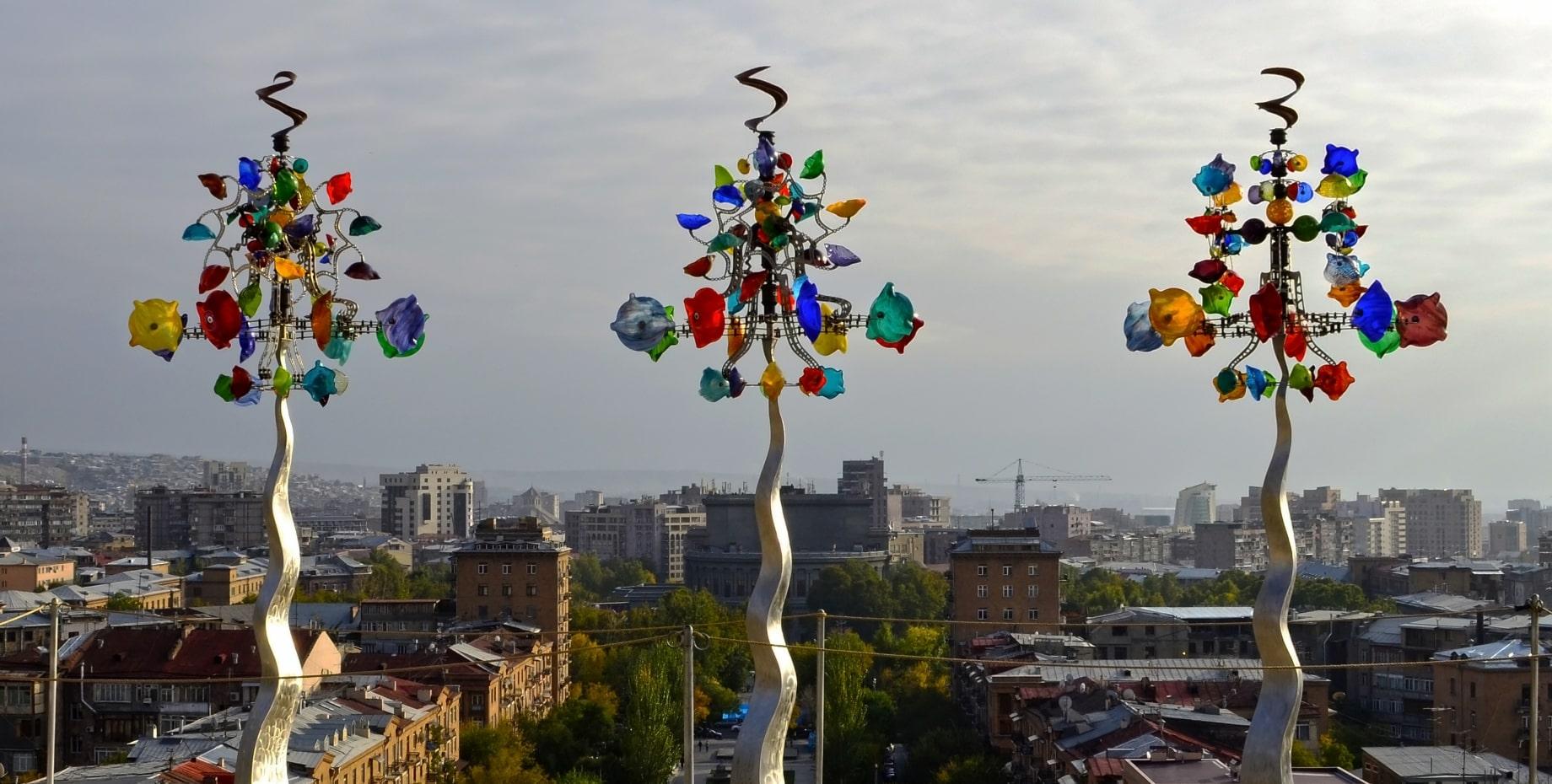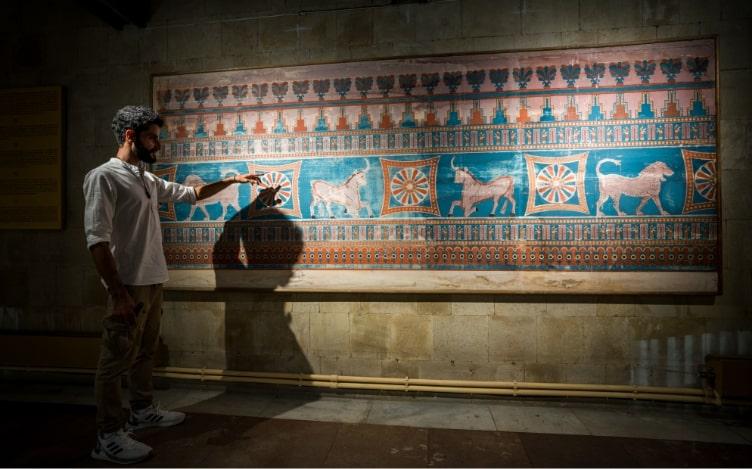The Hidden Gems: Exploring Armenia's Non-Famous Sites

From remote monasteries perched on cliff sides to fields of ancient khachkars, Armenia's hidden treasures offer an awe-inspiring journey off the beaten path into history and culture. In this article, we venture beyond the familiar and explore eight of Armenia’s lesser-known marvels, where history whispers through ancient stone and nature's grandeur takes centre stage.
One Thousand Khachkars
Noratus Cemetery is a massive mediaeval collection of khachkars, elaborately carved cross-stones which combine Christian imagery with traditional Armenian motifs. In 2010, khachkars were added to the UNESCO Representative List of the Intangible Cultural Heritage of Humanity. Noratus, located in a village by the same name, contains Armenia’s largest collection of unique khachkars – nearly 1,000! Each one is unique and some date back to the 10th century. Entrance is free. For those who enjoy walking, hike from the cemetery to the Noratus peninsula, which is the narrowest point between Lake Sevan’s southern and northern shores. Continue down the lovely walking path which winds its way between the white Noratus cliffs and the massive pine forest.
It Started As A Potato Cellar
Located in Arinj, just outside of Yerevan, Levon’s Divine Underground is a fascinating testament to the power of inspiration. When builder Levon Arakelyan’s wife Tosya asked him to dig an underground potato cellar next to their house, he acquiesced. But the digging and carving lasted for 23 years! Spurred on by a celestial voice to keep at his work, he dug much more than a cellar. Levon’s Divine Underground is a network of holy caves, replete with rooms, stairs and sanctuaries. It extends 21 metres deep and occupies 300 square metres of space. Using only hand tools, Levon worked up to 18 hours per day on his mission. In his honor, Tosya now runs a small museum dedicated to the project. For 2,000 AMD, you can tour the underground caves and project-related artefacts and memorabilia.
A Soviet-Era Observatory
Step into another world at Byurakan Observatory, an intriguing relic of Soviet-era astronomical exploration just 40 minutes from Yerevan. Established in 1946 under the guidance of astrophysics luminary Viktor Hambardzumyan, the observatory played a vital role in Armenia’s contributions to the field. In 1971, Byurakan hosted the groundbreaking "First International Symposium on the Problem of Extraterrestrial Civilizations and Communication with Them.” While the observatory maintains its operational pulse, ongoing scientific pursuits are in temporary slumber, and only a fragment of its vast complex is currently active. While there, enjoy an immersive hour-long guided tour or visit after sundown to witness the moon, stars, and planets come alive through the lens of the on-site telescopes. Learn more about the observatory’s offerings and entry fees on their website here.
Armenia’s Machu Picchu
About a 20 minute’s drive from the charming city of Goris lies the captivating village of Hin Khot. Often referred to as Armenia’s Machu Picchu, Hin Khot is a marvel of Armenia’s Syunik region. There, you’ll find old abandoned homes and structures built seamlessly into the crags of the surrounding mountains. The village is ancient, dating back thousands of years. While people lived in the crag dwellings of Hin Khot as recently as the 1970s, the area is abandoned, whispering with the winds of the past. While in the area, make sure to visit the similarly enchanting cliffside settlements of Khndzoresk and the Goris cave dwellings.
Before Stonehenge
Around 7,500 years ago, ancient Armenians placed over 220 basalt slabs on a plateau, forming the enigmatic Zorats Karer Settlement Historical and Cultural Reserve. The site, also known as Karahunj, lies near Sisian in Armenia's Syunik region. Resembling England's Stonehenge but predating it, Karahunj's purpose remains a mystery. Some theorise that it was an astronomical observatory or calendar, with stones aligned to celestial events. Many of these stones bear holes that generate whistling sounds in the wind. Other experts have even posited that the area was used as a temple or university complex. Enjoy the mystery of it and come up with your own theory! Learn more here.
The Quivering Basilica
The three-nave basilica of Yereruyk is located in the rural community of Anipemza on the border of Armenia’s Shirak and Aragatsotn regions. Yererouk is located only several kilometres from Ani, the 10th century capital of Armenia which was known as the “city of 1,001 churches.” The half-collapsed monastery complex is one of the few standing that rests on a sort of pedestal of stairs. The name “Yereruyk” is derived from the Armenian verb for “to quiver.” Experts believe that this is because the building, held up by pillars, seemed to quiver from the distance. Following a 7th century earthquake and the ravages of time, it remains in majestic ruins. The complex was added to the UNESCO tentative list for consideration as a world heritage site in 1995.
Frescoes in the Forest
Kobayr Monastery, an ancient monastery near quaint Tumanyan village in Armenia's lush Lori Province, offers a journey through time and faith. Dating back to the 12th century, its stone carvings and frescoes unveil Armenia's deep religious heritage. Perched on a cliff, the complex boasts breathtaking views of the forests and Debed River canyon below. Explore its main church, chapels, and khachkars, and admire the still extant Biblical frescoes that have stood the wear and tear of time and the elements. A treasure for history and architecture enthusiasts, Kobayr Monastery invites you to connect with centuries of devotion and craftsmanship in a serene natural setting.
The King of Kapan
Located on the slope of Mount Tigranasar near the city of Kapan in Armenia’s southern Syunik region, the 10th century Vahanavank monastic complex gives a breathtaking view of the surrounding nature. Named after Vahan, the son of Prince Dzagik, the complex includes the St. Gregory the Illuminator Church, a narthex, a portico, and the two-story Church of St. Astvatsatsin. In 1046, the complex's church, narthex, and portico underwent reconstruction. To this day, it remains a testament to the faith and architectural prowess of the Armenian people.
–
Discovering these hidden gems will take you on an incredible adventure through the regions filled with history, culture, and breath taking landscapes. Get exploring!
Published on September 19, 2023



